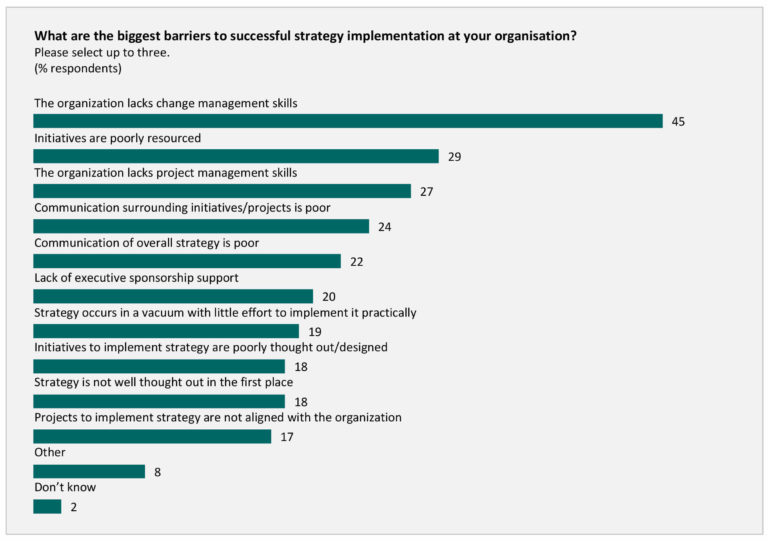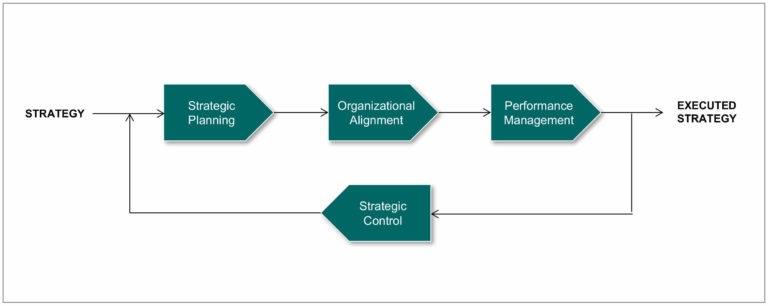Consider a CEO facing any of the following strategic imperatives: a new strategy shift, moving into a new market, a breakthrough innovation, a merger or acquisition, downsizing due to industry overcapacity, radical business redesign, a new sales & marketing strategy. In each case the strategic rationale may be sound, the financial logic clear, and the competitive requirements compelling – in other words, the business case is solid. However, the challenge of execution is not.
Strategy execution is the CEO’s greatest challenge and the biggest issue faced by management everywhere in the world. Without execution strategy fails, as it never gets off the ground. As vital as execution is to any business, companies struggle with it all the time. Even more importantly, mastering execution confers the largest competitive advantage, which is the ability to field one’s strategy. But if execution is so important, why do companies struggle with it so much?
PERSPECTIVES FROM THE C-SUITE
The Economist Intelligence Unit conducted a survey in March 2013 of 587 senior executives globally. Fifty-two percent of respondents were C-level executives; the rest came from senior management. The study examined strategy execution with emphasis on the role of the C-suite. When asked to identify the biggest barriers to successful strategy execution at their organization, here is what the respondents had to say.
Exhibit 1. The Barriers To Strategy Execution

Clearly, these barriers are a mix of issues and the problem of strategy execution may seem overwhelming: lack of change management skills, insufficient resources, poor project management skills, lack of sponsorship, and much more – enough to stop anyone in their tracks. Granted strategy execution is a complex issue, but the solution does not have to be that complicated.
THE FOUR REQUIREMENTS OF STRATEGY EXECUTION
In our experience, four elements must be in place for strategy execution to function properly. They include the following:
1. Strategic planning to translate the strategy into frontline action
2. Organizational alignment of the company structure and its people to the strategy
3. Strategic performance management, and
4. Strategic control
Surprisingly, for many companies these elements are either missing or not working as expected.
Exhibit 2. Our Model to Strategy Execution

The closed loop provides the feedback and steering mechanisms necessary to course-correct against deviations from plans and take corrective action to drive “strategic” performance.
EXPENSIVE MISTAKES
Surprisingly, for many companies these elements are either missing or not working as expected. As a result, expensive mistakes come up, including the following:
- Strategic planning fails to translate strategy into front line initiatives that truly matter
- The organization and its employees are not aligned to the strategy
- Operating performance is not managed strategically
- Management lacks strategic controls
By clicking on each item, you’ll be taken to a short, incisive article to gain a greater understanding of these issues, that keep companies from executing their strategies.

